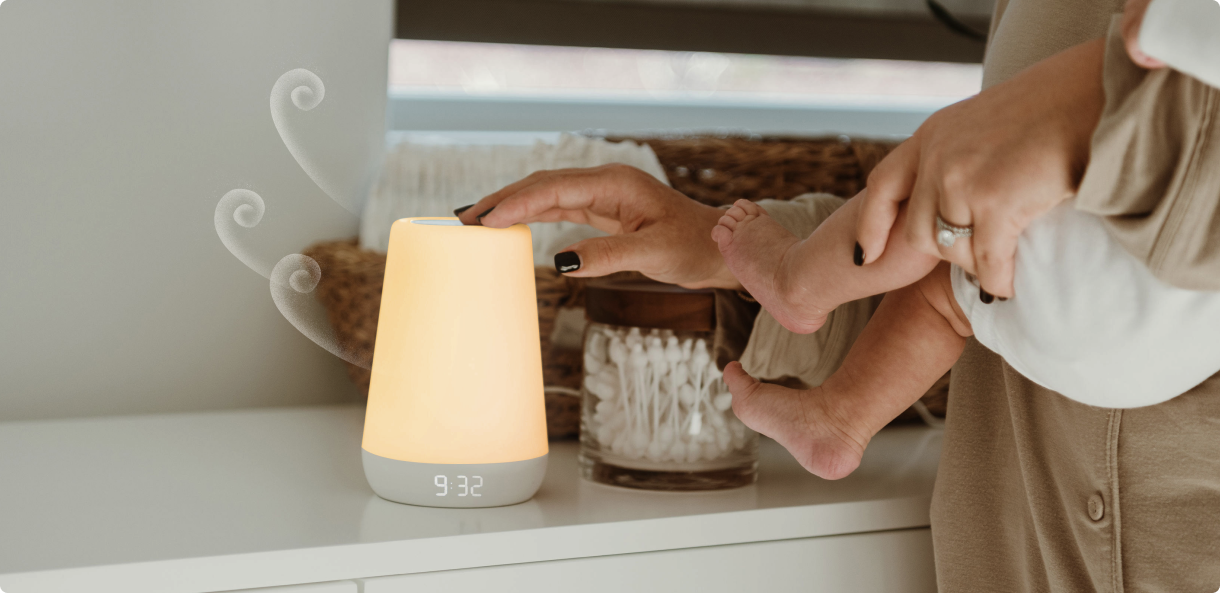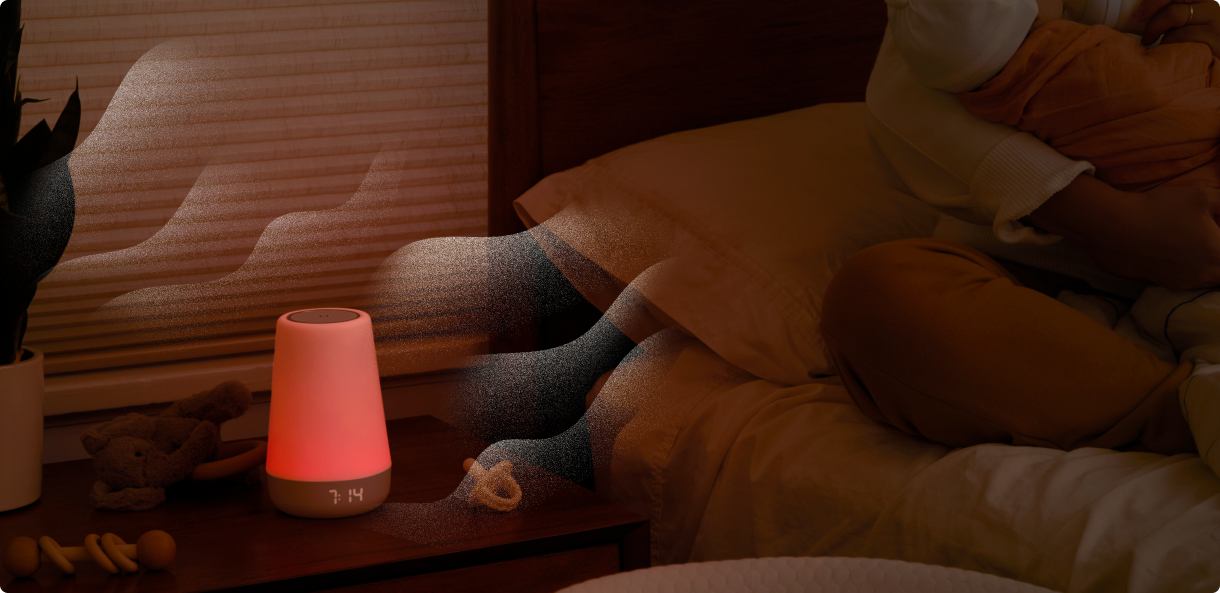Safe Sleep Sounds: What Parents Should Know
Getting a good night’s sleep is one of the most important parts of your child’s day (whether they want to believe it or not!).
As parents, we aim to do everything we can to help our kids sleep well — providing a cool, dark space to sleep in; engaging in a loving bedtime routine, and for many of us, turning on a sound machine. But is it safe to sleep with a sound machine on all night? Hatch consulted experts and compiled the latest research to help parents make informed decisions.
Why Sleep With a Sound Machine at All?
Most of us didn’t listen to sound machines when we were younger. So why are we even discussing using sounds in our kids’ rooms at night? “The main idea comes from preventing outside sounds from disturbing sleep,” explains Jessee R. Dietch, Ph.D., DBSM, an assistant professor in the School of Psychological Science at Oregon State University, and Hatch medical advisor.
“White noise is basically just raising the threshold over which a noise would be able to wake you up or arouse you from sleep,” says Dr. Dietch. And if your kid is going to bed at 8 PM but you’re not — and you’re watching TV, making dinner, or taking your barking dog for a walk — this can be super useful to keep sounds from waking them. According to a 2021 paper in Sleep Medicine Reviews, other theories as to why sound machines might improve sleep include the idea that a calming, continuous sound (like rain) could help soothe our brains to sleep, or that using the same noise each night acts as a “cue” to our brains that it’s time to sleep.
For very young babies, there’s another idea: “Conventional wisdom is that babies are soothed by whooshing sounds because when they were in the womb they heard their mother's blood rushing in whooshes,” explains Jade Wu, Ph.D., DBSM, a board-certified sleep psychologist, researcher, and Hatch medical advisor.
Most research surrounding the use of sound machines at night focuses on white noise, which researchers Ayse Karakoç, Ph.D., and Funda Turker, MSc, defined as “a monotonous noise composed of various environmental sounds of different frequencies.” White noise isn’t the only kind of sound people use to sleep with — rain sounds, ocean sounds, and other “noises” like pink noise, are also popular— but white noise tends to be the most commonly used with babies and kids (perhaps because of the association-with-the-womb theory).

Are Sound Machines Safe?
In late 2023, the American Academy of Pediatrics issued a warning about noise exposure in children, which mentioned ensuring the safe use of infant sleep machines. The idea of these “safe use” standards mostly derives from a 2014 study, which found that -- when using the maximum volume and accounting for an infant’s ear structure -- many infant sleep machines exceeded 85 decibels of sound. In order to prevent hearing loss, OSHA, the Occupational Safety and Health Administration, requires employers to implement safety measures if an employee is exposed to sounds at 85 decibels for more than 8 hours. So if your child’s sound machine is emitting sounds at 85 decibels all night, which for most kids is about 10-12 hours, there is an understandable concern!
However, this study doesn’t mean that sound machines are inherently unsafe. The concerning decibel outputs were recorded when the machine was turned up to its maximum volume and placed either 30 cm or 100 cm from a crib, equivalent to being on the crib railing or right next to it. When the sound machine was placed 200 cm from the crib, or across the room, none of the machines exceeded 85 decibels. And this was at max volume! Most parents do not set their child’s sound machine to play as loudly as it can. The study authors note that hospital neonatal intensive care units (NICUs) use an average of 50 decibels to determine if noise levels are too high for babies in their care, which can be a good target volume for your white noise machine at home.

How to safely use your sound machine
“There are decimeters that you can get for your phone to measure [decibel output],” says Dr. Dietch. “They may not be super accurate, but they can give you a ballpark.” Also, your child may have specific considerations (maybe they have hearing loss, or maybe they just really like sleeping with steady sound) that you want the input of your doctor on.
“You can check with your pediatrician for decibel levels that are considered safe,” says Dr. Wu. Practically speaking, your sound machine should not be so loud that you have to substantially raise your voice to speak over it.
If you’re using the sound machine to cover up noises in your house, also remember that you don’t need it at a louder volume all night. “We have [the white noise] on at a certain level while the adults are still up. And then when we go to bed, we turn it down to a lower level because we don't really expect there to be lots of sounds coming up during the night,” explains Dr. Dietch.
Another way to increase the safety of your white noise machine is to plug in your child’s unit far from their sleeping space — 200 cm is about six-and-a-half feet. “I think it's actually better to have the white noise source closer to the source of the potential sound,” says Dr. Dietch. “You can have it close to the door.”
“Much of figuring out baby [and child] sleep is trial and error,” says Dr. Wu. If your child has heavily disrupted sleep or seems really tired during the day, there’s no harm in experimenting with the noise level or trying a different sound for a few nights to see if that helps (and it may not!).